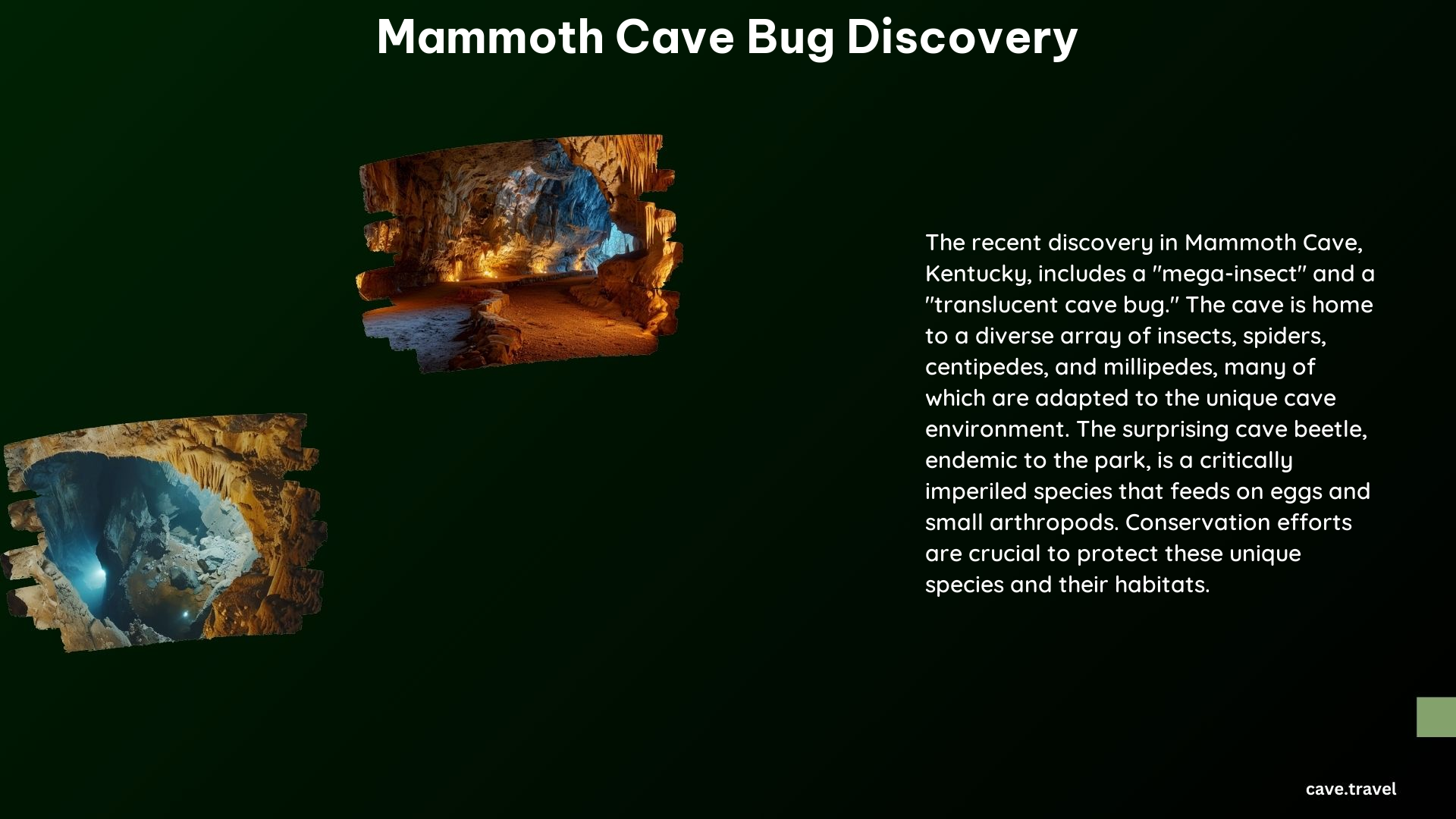The Mammoth Cave Bug Discovery is a significant finding that has shed light on the unique and diverse ecosystem within Mammoth Cave National Park in Kentucky. These cave-dwelling insects have evolved remarkable adaptations to thrive in the dark, damp, and nutrient-poor environment of the cave system.
Types of Insects Found in Mammoth Cave

Two of the most notable insects discovered in Mammoth Cave are:
Surprising Cave Beetle
The Surprising Cave Beetle is a ground beetle that belongs to the family Carabidae. This beetle is endemic to Mammoth Cave National Park and is considered critically imperiled or threatened. Its unique adaptations to the cave environment include:
- Eyelessness: The beetle has lost its eyes due to the lack of light in the cave.
- Flightlessness: It has lost the ability to fly, as flying is not necessary in the cave.
- Depigmentation: The beetle has an amber coloration due to the lack of light, which leads to depigmentation.
- Long Legs and Antennae: The beetle has developed long legs and antennae to increase its sensory perception in the dark environment.
Translucent Cave Bug
The Translucent Cave Bug is another insect found in Mammoth Cave, particularly in areas that are mostly dry but occasionally flooded. This bug is approximately 1/10 inch in size and has a translucent body, which is an adaptation to the cave environment.
Adaptations to the Cave Environment

The insects found in Mammoth Cave have evolved remarkable adaptations to thrive in the unique cave ecosystem. These adaptations include:
- Eyelessness: Many cave insects, including the Surprising Cave Beetle, have lost their eyes due to the lack of light in the cave environment.
- Flightlessness: Cave insects often lose the ability to fly as they adapt to the cave environment, where flying is not necessary.
- Depigmentation: Cave insects often have an amber coloration due to the lack of light, which leads to depigmentation.
- Long Legs and Antennae: Cave insects have developed long legs and antennae to increase their sensory perception in the dark environment.
Significance of the Mammoth Cave Bug Discovery
The discovery of these unique cave-dwelling insects has several important implications:
-
Conservation: The conservation of cave insects like the Surprising Cave Beetle is crucial for protecting biological diversity. Efforts to conserve these species also protect other cave insects and the overall cave ecosystem.
-
Ecological Role: Cave insects play a vital role in the ecosystem, feeding on other insects, springtails, millipedes, and small worms. Their presence is essential for maintaining the delicate balance of the cave environment.
Discovery and Exploration
The Surprising Cave Beetle was first discovered in Mammoth Cave National Park, and its discovery has contributed significantly to the understanding of cave ecosystems. Ongoing research and exploration in Mammoth Cave have led to the identification of new species, including ancient shark fossils, which highlight the importance of continued exploration and conservation efforts.
Visiting Mammoth Cave
Visitors to Mammoth Cave National Park can explore the diverse array of insects, spiders, centipedes, and millipedes that call the cave home. However, it is important to note that visitors can help conserve these cave-dwelling creatures by reducing their impact on the environment, not littering, and not taking anything from the cave.
References
- National Park Service. (2022). Insects, Spiders, Centipedes, Millipedes – Mammoth Cave National Park. Retrieved from https://www.nps.gov/maca/learn/nature/insects.htm
- University of Kentucky. (n.d.). Surprising Cave Beetle. Retrieved from https://entomology.ca.uky.edu/node/1556
- National Park Service. (2024). Two new species of ancient sharks identified through research at Mammoth Cave National Park. Retrieved from https://www.nps.gov/maca/learn/news/two-new-species-of-ancient-sharks-identified-through-research-at-mammoth-cave-national-park.htm
- BugGuide.Net. (2021). Translucent Cave Bug. Retrieved from https://bugguide.net/node/view/1958115/bgimage
